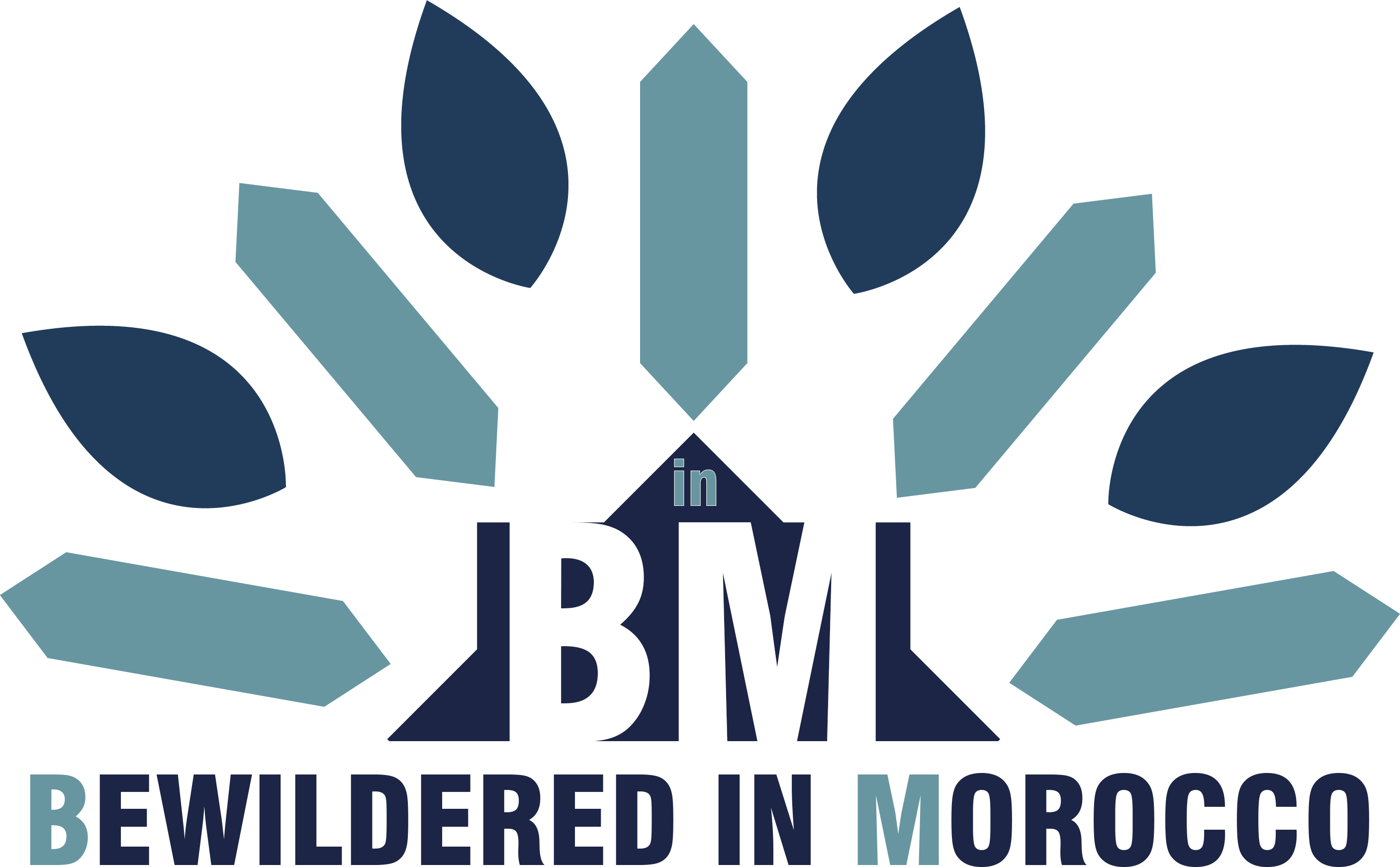There's something magical about planning a mountain adventure. You wake up thinking about snow-dusted peaks, fresh morning air, and the feeling of standing on top of the world. If that's calling to you, then a 2-day itinerary for Toubkal summit might be exactly what you need.
Let me be honest with you—climbing Mount Toubkal isn't just another hiking trip. It's a journey through Morocco's soul. You'll walk past Berber villages, meet friendly locals who'll invite you for mint tea, and experience the kind of mountain hospitality that changes how you see travel forever. At 4,167 meters, Toubkal stands proudly as North Africa's highest peak, and reaching it in just two days? That's an adventure worth every step.
I've met hundreds of travelers who've tackled this climb, and each one tells the same story: "It was harder than I expected, but also more rewarding." That's why I'm sharing this 2-day itinerary for Toubkal summit with you—to help you prepare properly, know what to expect, and make the most of those precious 48 hours in the High Atlas.
WHY TOUBKAL? UNDERSTANDING MOROCCO'S MIGHTY MOUNTAIN

Before we dive into the details of your 2-day itinerary for Toubkal summit, let's talk about why this mountain matters.
Mount Toubkal isn't just a number on a map. For centuries, it's been sacred to the Berber people who call these mountains home. Located about 65 kilometers south of Marrakech, this peak rises from the High Atlas Mountains like a guardian watching over the valleys below. The mountain sits within Toubkal National Park, a landscape carved by time itself—terraced fields, walnut groves, and ancient mule paths that have carried traders and travelers for generations.
What makes Toubkal different from other mountains? It's not the height alone. It's the warmth of the people, the untouched beauty of the landscape, and the feeling that you're not just climbing a peak—you're being welcomed into a community. When you follow a 2-day itinerary for Toubkal summit, you're not just doing a trek. You're stepping into a story that's been written across centuries.
THE BERBER HEART OF THE HIGH ATLAS
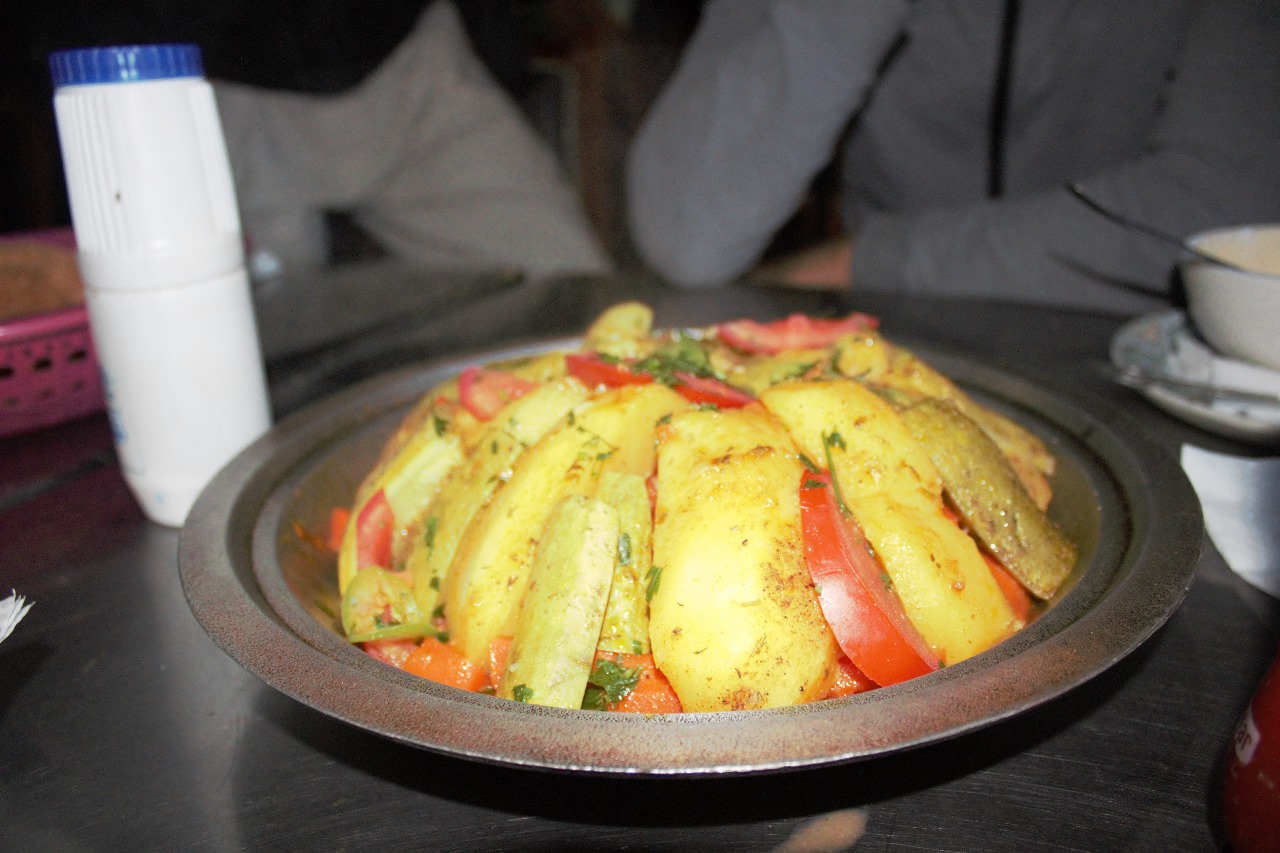
Here's something many travelers don't realize: the mountains around Toubkal are very much alive with culture. Small hamlets like Imlil and Aroumd are home to Berber families who've lived here for generations. These aren't museum pieces—they're real communities where people grow their own food, herd sheep, and maintain traditions that go back hundreds of years.
When you're on your 2-day itinerary for Toubkal summit, you'll likely meet a guide or local villager. Say "Azul" (hello in Amazigh) and watch their face light up. Offer to sit for tea. Listen to their stories about the mountains, the seasons, and how life moves differently at altitude. These small moments transform your climb from a physical achievement into a cultural experience.
The houses here are built from stone and earth—materials that keep homes cool in summer and warm in winter. It's practical architecture that's also beautiful. You'll see terraced gardens clinging to steep slopes, each one a testament to generations of knowledge about working with the land, not against it.
PLANNING YOUR 2-DAY ITINERARY FOR TOUBKAL SUMMIT: WHEN AND HOW
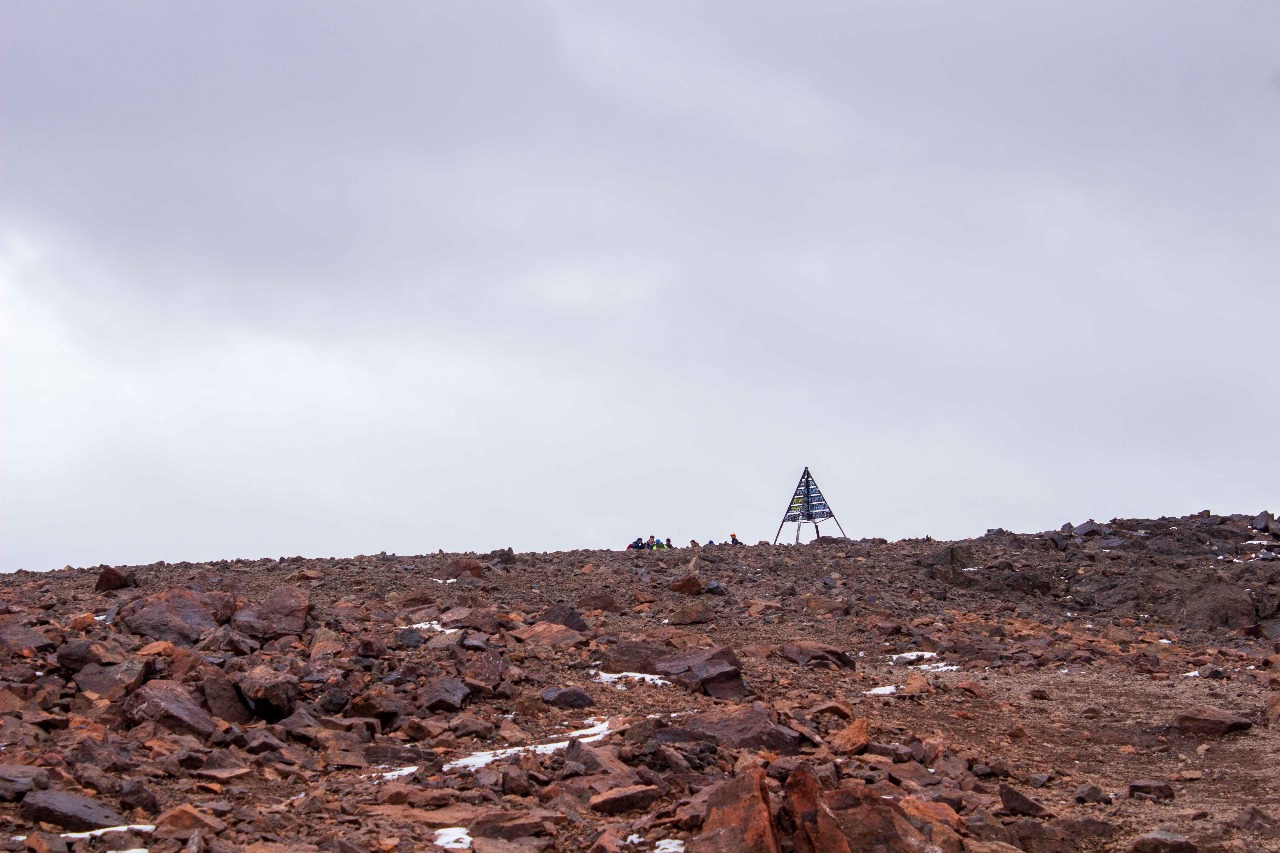
Timing is everything when you're planning a 2-day itinerary for Toubkal summit. Let me break this down for you.
The Best Season for Your Toubkal Climb
April through October is your sweet spot. During these months, you get clear skies, manageable temperatures, and well-maintained paths. I recommend starting your 2-day itinerary for Toubkal summit in early summer (May-June) or early autumn (September-October). The weather is stable, the mountain isn't overcrowded, and you won't battle extreme heat or cold.
Winter? That's a different beast entirely. If you're climbing Toubkal in winter, you'll need crampons, an ice axe, and serious mountaineering experience. That's not a 2-day itinerary anymore—it's a specialized expedition. Unless you're experienced with ice climbing, stick to the warmer months.
Getting to Imlil: Your Starting Point
Your 2-day itinerary for Toubkal summit begins in Imlil, a charming mountain village at 1,740 meters. From Marrakech, you have a few options:
Take a shared taxi from the main taxi stand. This typically costs between 50-80 MAD per person and takes about 1.5 to 2 hours. Yes, the taxi might feel cramped, but you'll meet locals and get a real taste of Moroccan travel. Plus, you're supporting the local economy.
Hire a private car or guide who can arrange transportation. This costs more (around 500-800 MAD) but offers flexibility and a more personalized experience.
Book through your accommodation or a tour operator in Marrakech.
My advice? Go with the shared taxi. It's affordable, authentic, and you might end up making friends who give you insider tips about the mountain.
PREPARING FOR SUCCESS: THE ESSENTIALS FOR YOUR 2-DAY ITINERARY FOR TOUBKAL SUMMIT

Preparation makes the difference between a great experience and a painful one. Let's talk about what you actually need.
Fitness Level and Acclimatization
Here's what I tell everyone: the 2-day itinerary for Toubkal summit isn't technically difficult, but it is physically demanding. You don't need rock-climbing skills or mountaineering experience, but you do need decent fitness. If you can walk for 5-6 hours without stopping and handle steep terrain, you've got the basics.
The bigger challenge? Altitude. You're going from sea level to 4,167 meters in 48 hours. That's fast. Your body might protest with headaches or nausea. Here's what helps:
Arrive in Morocco a few days early and spend time in Marrakech or nearby villages to let your body adjust.
Spend an extra night in Imlil before starting your 2-day itinerary for Toubkal summit. This gives your lungs time to adapt.
Climb slowly on Day 1. There's no prize for speed.
Drink lots of water. Seriously—more than you think you need.
Avoid alcohol the night before your climb.
What to Pack for Your Toubkal Climb
I've seen people show up with suitcases for a 2-day hike. Don't be that person. Your backpack should weigh no more than 8-10 kilograms. Here's my exact packing list for a 2-day itinerary for Toubkal summit:
Clothing: Moisture-wicking shirt, lightweight hiking pants, warm fleece or jacket, wind-resistant outer layer, wool socks (bring three pairs), comfortable hiking boots (broken in beforehand!), warm hat, sunglasses
Essentials: Headlamp with extra batteries, sunscreen (SPF 50+), lip balm with SPF, basic first aid kit, medications (if needed), toiletries, toilet paper and a small trowel
Gear: Refillable water bottle (at least 1.5 liters), lightweight sleeping bag if you're sensitive to cold, trekking poles to save your knees, day backpack (30-40 liters), sturdy shoes for descent
Food: Energy bars, nuts, dried fruit, electrolyte tablets
That's it. Everything else you need is available at the refuge or in villages along the way.
Hiring a Local Guide
Here's my honest take: you can climb Toubkal without a guide if you're experienced with mountain navigation. But should you? I don't think so. Hiring a local guide for your 2-day itinerary for Toubkal summit supports the mountain communities and gives you so much more than just directions.
A good guide knows:
- The safest routes in changing weather
- Where to find the best water sources
- Stories about the villages and valleys
- How to interact respectfully with locals
- First aid and altitude sickness management
Expect to pay 250-400 MAD per day for a certified guide. Yes, that seems like a lot, but think about it: you're paying for expertise, safety, and a genuine cultural connection. That's worth every dirham.
Where do you find guides? In Imlil, you can't miss them—they'll find you! Look for guides who are certified through official mountaineering associations. Ask your accommodation to recommend someone. Get references from other travelers.
DAY 1: FROM IMLIL TO REFUGE DU TOUBKAL
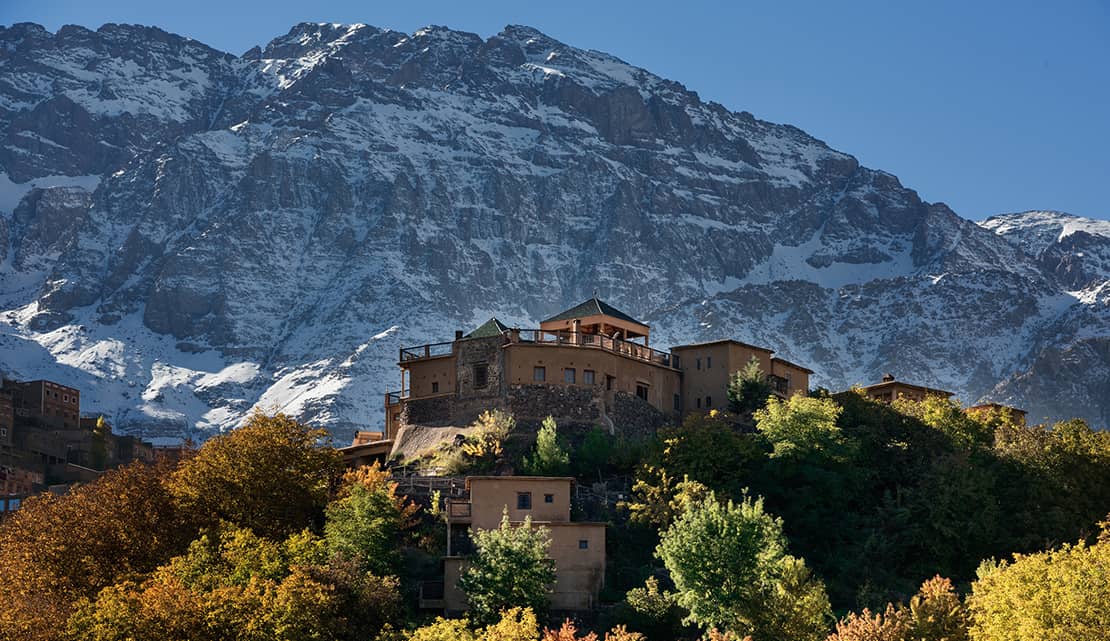
Your 2-day itinerary for Toubkal summit truly begins when you step onto the mountain path from Imlil.
Morning: Setting Out from Imlil
You'll likely start around 8:00-9:00 AM from Imlil. The village is still waking up—you'll smell bread baking in stone ovens and hear the calls of shepherds heading to higher pastures. The air is crisp and cool. Your legs feel fresh. This is the moment you've been dreaming about.
The first part of your hike takes you through Imlil itself, following narrow stone paths that wind between traditional houses. These homes have been here for generations, built by families who understand how to live in harmony with the mountain. Take a moment to appreciate the architecture—small windows keep the heat out, thick walls provide insulation.
Mid-Morning: Through Aroumd
After about an hour, you'll reach Aroumd, the last village before the long ascent. This is where the landscape starts to open up. Walnut groves give way to rocky terrain. You'll start seeing mules carrying supplies to the refuge—these sure-footed animals have been the mountain's highways for centuries.
It's here that you might feel the first hint that you're climbing. The path gets steeper. Breathe steadily. Take your time. Your guide will set a comfortable pace—the Moroccan mountain philosophy is "slowly, slowly" (which translates to "bez-bez").
Midday: Sidi Chamharouch Shrine
Around midday (depending on your pace), you'll reach Sidi Chamharouch, a small white shrine nestled on the mountainside. This spot is sacred to many locals, who believe it has spiritual healing powers. It's also a perfect place to rest.
Local vendors here sell oranges, water, and snacks. This is where your 2-day itinerary for Toubkal summit becomes real—you'll sit with your guide, maybe with other trekkers from around the world, and share mint tea while gazing at the valleys below. The views are already stunning, and you're only halfway to the refuge.
Respect the shrine. Don't shout or disturb people who've come to pray. Take photos respectfully. Leave the area as you found it.
Afternoon: The Rocky Valley Ascent
From Sidi Chamharouch, the trail becomes noticeably steeper. You're now in rocky terrain with few trees. The mountain opens up around you, and you start to understand why Toubkal feels so mighty.
Your breathing will become heavier. Your legs might feel tired. This is normal. Drink water regularly. Stop when you need to. There's no shame in moving slowly—everyone on the mountain is doing their own climb, at their own pace.
The landscape here is stark and beautiful. Red and gray rock formations create a natural sculpture garden. On clear days, you can already see valleys stretching out below, green and distant. This is where you truly feel the elevation gain.
Late Afternoon: Arrival at Refuge du Toubkal
You'll arrive at Refuge du Toubkal (3,207 meters) by late afternoon—around 3:00-4:00 PM if you started at 9:00 AM. The refuge is a simple building, but to tired legs, it looks like a palace.
Check in, drop your pack, and rest for a bit. The refuge staff will show you to your bunk in the dormitory. Don't worry about the basics—there's a toilet (squat style), water for washing, and warmth from other trekkers and the refuge stove.
Evening at the Refuge
Dinner is served around 6:00-7:00 PM—usually a hearty soup, couscous, vegetables, and bread. It's simple food, but at altitude, it tastes like a five-star meal. You'll eat with dozens of other trekkers, all recovering from Day 1.
After dinner, step outside. The sun is setting over the mountains, painting the sky in shades of orange and pink. As darkness falls, look up. The night sky here is impossibly clear—the Milky Way stretches across the heavens like a river of light. This is one of those moments that stays with you forever.
Pro tip for Day 1: Bring earplugs. Refuge dorms can get noisy with people arriving at different times, and you want sleep before your 4:00 AM summit push.
DAY 2: THE SUMMIT PUSH AND DESCENT
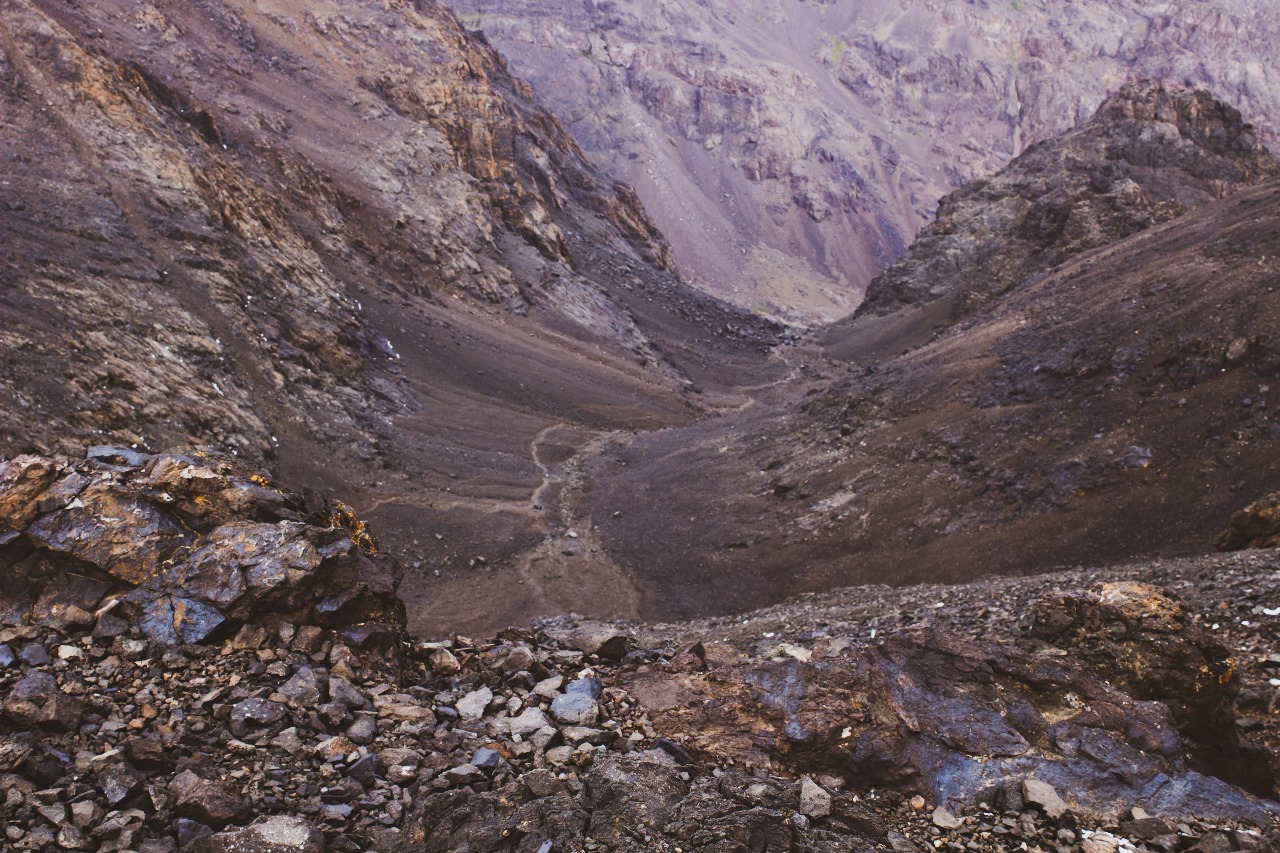
This is it. This is the day your 2-day itinerary for Toubkal summit reaches its climax.
The 4:00 AM Start
Your alarm goes off in the darkness. It's cold—probably around 0-5 degrees Celsius. You'll pull on layers, strap on your headlamp, and grab a quick breakfast. The refuge serves hot drinks and bread. Eat something, even if you're not hungry. Your body needs fuel for what's ahead.
By 4:30 AM, you'll be on the trail. Your headlamp beam cuts through the darkness, illuminating the rocky scree path ahead. Around you, dozens of other trekkers are also starting their summit push. It's quiet except for the sound of boots on rock and steady breathing.
The Climb in Darkness
The trail zigzags up the mountainside in a steady rhythm. It's not technical climbing—there are no ropes or exposed edges—but it's relentless. Your thighs will burn. Your lungs will work hard in the thin air. This is where your 2-day itinerary for Toubkal summit tests your determination.
But here's something magical: as you climb, the sky begins to change. The blackness transforms into deep blue, then lighter blue. Then, just as your legs are really starting to protest, the first rays of sunlight hit the peak above you.
The Sunrise at the Summit
There's genuinely no way to describe watching sunrise from near 4,167 meters. The sun doesn't just appear—it ignites. Colors you didn't know existed paint the sky. The snowcaps glow pink and gold. In the far distance, you can see Marrakech's faint outline under morning haze.
You'll reach the summit sign (usually around 7:00-8:00 AM) and join dozens of other climbers who arrived from different refuges. Some will be crying. Some will be laughing. Everyone will be changed by what they've just done.
Take photos. Celebrate. Let yourself feel proud. You've done it. Your 2-day itinerary for Toubkal summit has brought you to the top of North Africa.
At the Summit: More Than Just a View
Spend 30-45 minutes at the top, but not more. The wind is brutal up here, and you need to descend before the day gets too hot or weather changes. But in those minutes, take it in:
- The 360-degree view of the High Atlas Mountains
- The silence that only exists at altitude
- The knowledge that you've accomplished something real
- The connection you feel to everyone around you
- The gratitude for your body's strength
This is what the 2-day itinerary for Toubkal summit is really about. Not the peak itself, but the transformation of reaching it.
The Descent Back to Refuge
The descent is easier on your lungs but harder on your knees. Take it slowly. Use your trekking poles. Stop frequently. Your knees will thank you.
You'll be back at the refuge by 10:00-11:00 AM, where hot food and tea are waiting. Eat, rest, and let your body recover. Many people feel emotional here—the adrenaline has worn off, the reality of what you've accomplished sinks in, and exhaustion catches up.
Afternoon: The Return to Imlil
After lunch and rest, you'll begin the descent to Imlil. This takes 3-4 hours and is mostly downhill, which sounds easier but actually puts strain on your knees and hips. Take your time.
You'll pass through the same villages you hiked through on Day 1, now moving in the opposite direction. You'll see Sidi Chamharouch again from a different angle. You'll reconnect with the landscape you've now traveled twice.
You'll arrive back in Imlil by late afternoon—tired, sore, and absolutely transformed. A warm tajine and mint tea will be waiting at your accommodation.
HIDDEN GEMS: EXTENDING YOUR TOUBKAL ADVENTURE
If you have an extra day or two after your 2-day itinerary for Toubkal summit, don't skip this section.
Aït Souka Village
Just outside Imlil, this village offers terraced gardens and peaceful views. Spend an afternoon here wandering through the gardens, meeting locals, and understanding how mountain agriculture works. It's a gentler experience after your summit push and perfect for letting your legs recover.
Tizi n'Tamatert Pass
If you have the energy, this high pass offers panoramic views over neighboring valleys. It's less crowded than the main Toubkal route and gives you another perspective on the High Atlas landscape. You can reach it on a half-day hike from Imlil.
Local Hammam (Bathhouse)
After two days of climbing, a visit to the local hammam is pure bliss. For about 30-50 MAD, you can soak in hot water and let a hammam attendant scrub away two days of mountain grime. It's therapeutic, cultural, and deeply relaxing.
Stay with a Berber Family
Many families in and around Imlil rent rooms to travelers. Staying in a traditional home gives you a genuine glimpse of mountain life. You'll eat home-cooked meals, learn about local traditions, and experience hospitality that can't be found in any hotel.
ESSENTIAL TIPS FOR YOUR 2-DAY ITINERARY FOR TOUBKAL SUMMIT
Let me give you the advice I wish someone had given me before my first high-altitude climb:
Altitude Matters
If you're not used to elevation, don't rush. Spend an extra night in Imlil before starting your 2-day itinerary for Toubkal summit. Your body will thank you. Altitude sickness is real—symptoms include headache, nausea, and shortness of breath. If you feel seriously unwell, descent is your answer.
Hydration Is Non-Negotiable
Drink water constantly. You'll lose fluids fast at altitude, and dehydration makes altitude sickness worse. At the refuge, refill your bottles. Along the trail, drink at springs and streams. Don't be shy about asking your guide where safe water is.
Weather Changes Fast
Morocco's mountains are dramatic. A clear morning can turn cloudy by afternoon. Always carry a wind-proof jacket, even in summer. If weather deteriorates during your climb, turn back. No peak is worth risking your safety.
Bring Cash in Moroccan Dirhams
There are no ATMs beyond Imlil. Guides, refuge staff, and village vendors need cash. Bring enough for tips, refreshments, and guide payments (typically 250-400 MAD per day).
Respect Local Customs
This matters. Dress modestly—shoulders and knees covered when you're in villages. Greet people respectfully. Never photograph people without asking permission first. Accept chai (tea) when offered. These gestures of respect create positive interactions and support the communities that make your trek possible.
Responsible Mountain Trekking
As more travelers discover Toubkal, the mountain needs protection:
- Don't leave litter anywhere. Pack out everything you pack in.
- Use refillable water bottles instead of buying plastic bottles.
- Respect wildlife and grazing zones where sheep and goats feed.
- Buy from local guides and cooperatives, not big tour companies.
- Small conscious actions ensure future travelers enjoy Toubkal's pristine beauty.
Navigation and Maps
While the main trail is well-marked, carrying a map is smart. Pick up hand-drawn maps from Imlil shops. Even better, download offline GPS apps like Maps.me before you arrive. The route (Imlil → Aroumd → Sidi Chamharouch → Refuge du Toubkal → Summit → Return) is frequently used and clearly marked.
THE DEEPER MEANING: WHY YOUR 2-DAY ITINERARY FOR TOUBKAL SUMMIT MATTERS
After guiding hundreds of people through their 2-day itinerary for Toubkal summit, I've noticed something: everyone comes back changed. Not just physically tired, but spiritually shifted.
The mountain does something to you. It strips away distractions. It connects you to your own strength. It reminds you that you're part of something bigger—these mountains have stood for millions of years, and you're just passing through. That perspective is powerful.
You'll also carry home something less tangible: relationships. The guide who made you laugh during a difficult section. The Berber family who served you dinner at their home. The fellow trekker from another country who became your summit buddy. These connections remind you that humanity is fundamentally good and that travel creates bridges between cultures.
When people ask me if a 2-day itinerary for Toubkal summit is worth it, I don't just say yes. I tell them it's one of those experiences that stays with you. Years later, you'll still feel the cold mountain air, taste the strong mint tea, and remember that moment when you stood at the top of North Africa.
PRACTICAL LOGISTICS CHECKLIST FOR YOUR TOUBKAL ADVENTURE
Before you book your 2-day itinerary for Toubkal summit, here's your pre-trip checklist:
✓ Train yourself physically (walk at least 5-6 hours regularly for 4-6 weeks before) ✓ Book accommodation in Imlil for the night before your climb ✓ Arrange a certified guide through your accommodation or local association ✓ Purchase travel insurance that covers high-altitude trekking ✓ Get your vaccinations updated (speak with a travel doctor) ✓ Break in your hiking boots before the trip ✓ Download offline maps of the area ✓ Exchange money for Moroccan dirhams ✓ Pack your backpack and weigh it (should be 8-10 kg max) ✓ Arrange transportation from Marrakech to Imlil ✓ Sleep well the night before Day 1
YOUR TURN: SHARE YOUR TOUBKAL STORY
Standing on top of Mount Toubkal with silver clouds drifting below you—that's the kind of moment that stays forever. Your 2-day itinerary for Toubkal summit isn't just about reaching a height. It's about the path, the people you meet, the stories you hear, and the quiet power of Morocco's mountains.
Have you climbed Toubkal? Are you planning to tackle this adventure soon? I'd genuinely love to hear about your experience or answer any questions you have. The adventure is better when it's shared. Drop a comment below and tell me your Toubkal story.
And if you're planning more adventures in Morocco beyond this 2-day itinerary for Toubkal summit, check out my other guides on trekking in the Atlas Mountains and exploring the ancient kasbahs of Aït Benhaddou. Morocco has endless stories to tell, and I'm here to help you discover them.
Ready to conquer North Africa's highest peak? Your 2-day itinerary for Toubkal summit is waiting. Let's go.
